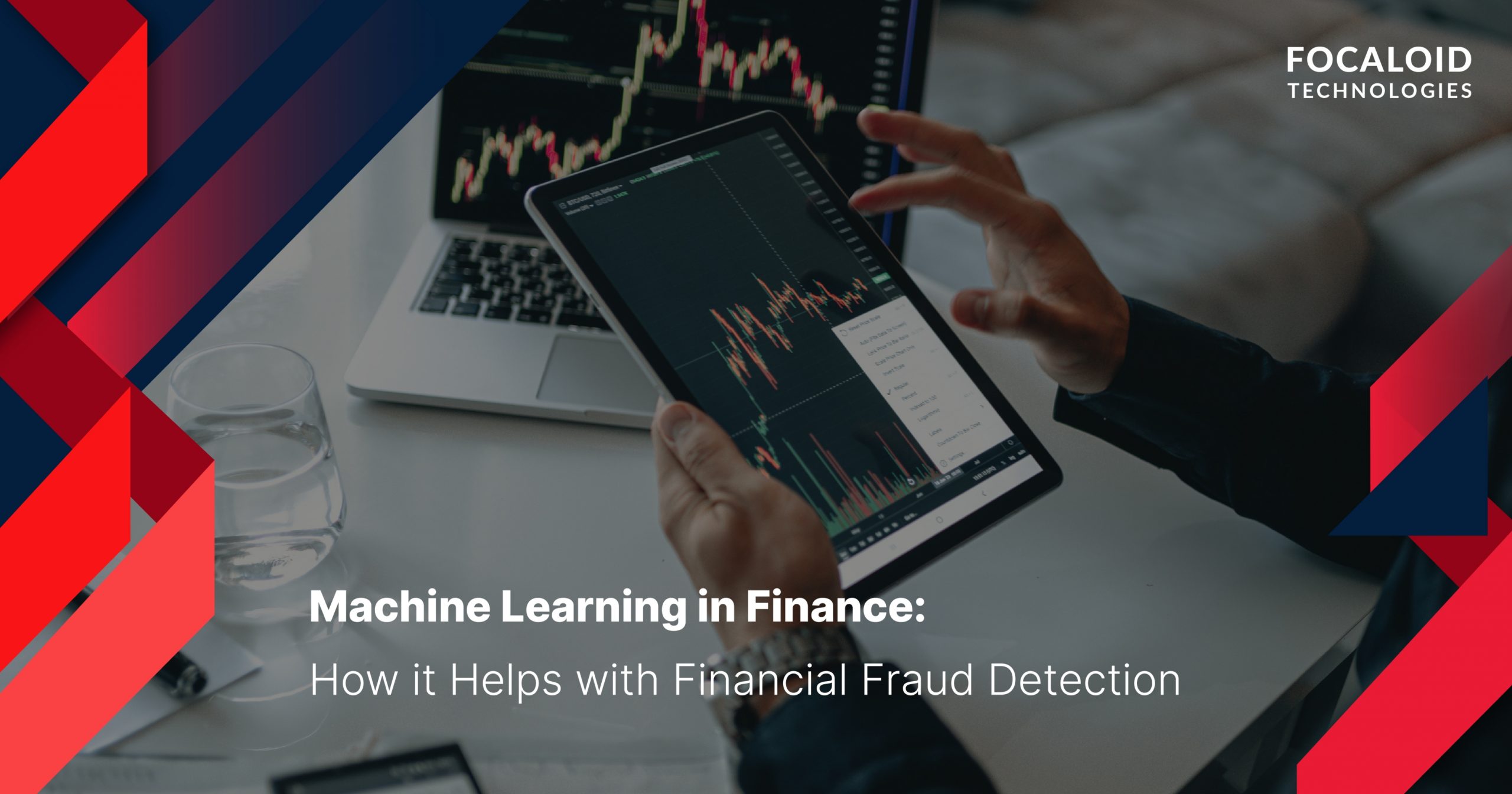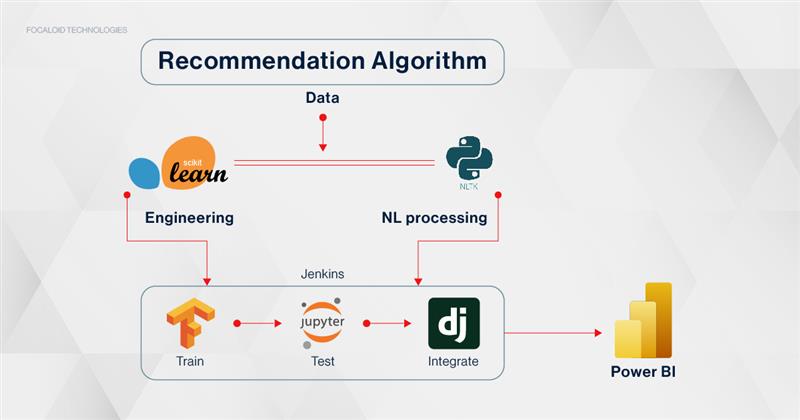Machine Learning |
Machine Learning in Finance: How it Helps with Financial Fraud Detection
05/08/2022
Machine Learning in Finance: How it Helps with Financial Fraud Detection
Fraud can be defined as the criminal act of acquiring money by deceiving people. Fraud is perhaps as old as humanity itself. Ever since human beings started exchanging goods and services there has always been the risk of one of the participants deceiving the other as well as the risk of both entities being scammed by a third party.
As business and commerce have evolved with time in the global village, financial frauds have diversified into different forms and businesses are more vulnerable than ever. However, with the emergence of disruptive technologies such as Artificial Intelligence, Machine Learning, Cloud Computing, Edge Computing, and Deep Learning, among others, businesses are equipping themselves with new-age technology that helps prevent fraud.
Moreover, the financial industry is going through a rapid digital transformation which is being propelled by the dynamic force of Machine Learning that allows systems to intuitively learn and augment their performance based on experiential learning without explicit programming. In this article, we shall have a detailed discussion about financial fraud and its preventive possibilities as presented by Machine Learning and its off-shoots. A report by Markets and Markets suggests that the worldwide fraud detection and prevention (FDP) economy is predicted to grow from $20.9 billion to $38.2 billion by 2025, which is at a compound annual growth rate of 12.8%.
Major Types of Financial Frauds
The scope of fraud detection and prevention encompasses money laundering, insurance frauds, fraudulent electronic payments, spurious bank transactions, phishing scams, et al. Besides, with the rise of new technologies these fraud schemes are becoming more complex and difficult to decipher or mitigate.
In this regard, here are some of the most significant types of fraud that concern the finance sector globally:
Credit Card Fraud:
As the whole world approaches a cashless economy fuelled by the rising fintech industry, credit cards have become extremely accessible and quite commonplace. There is a kind of financial fraud which entails stealing the credit card or debit card credentials of people through unsecured internet transactions. This is one of the most common forms of scams or financial fraud attempts even today.
This results in the victim losing all their financial assets in their account or a series of unrecognized expenses that only reveal themselves during the payment of bills. Machine learning algorithms allow transaction systems to identify which actions are genuine and which ones are fake by creating a robust set of security protocols and mismatch identification standards.
Email Phishing Fraud:
Email phishing is a type of cybercrime in which perpetrators send spam or malware-ridden messages and links to the victim through email. These messages seem authentic which causes people to mistake them for genuine emails and enter vulnerable information which causes them financial loss. Such emails may request account details, OTPs, answers to your social media security questions, etc.
However, there are automated methods facilitated by machine learning which allow systems to detect phishing attempts and spam emails. Most top-end email service providers such as Gmail, and Outlook, among others also use machine learning to categorize such spam emails into separate junk or spam folder. This acts as an additional layer of security on such platforms.
Mobile Phone Fraud:
Today smartphones come with NFC tags, and beacon systems, among other technologies which allow wireless payments with the touch of a button. Hence smartphones are equally vulnerable to hackers who can use various modes of cyber threat and hacking techniques to infiltrate the private data on your mobile phone. Recently, one such large-scale hacking occurred with a batch of Apple’s iPhones.
Machine learning is particularly useful when it comes to the prevention of fraud in mobile phone transactions beyond the realm of physical financial services like credit cards. ML algorithms allow detection of suspicious activities thereby preventing mobile frauds. Moreover, technologies such as two-factor authentication, biometric security, and facial recognition, all add to the overall security architecture of mobile phones.
Identity Theft:
One of the most alarming cyber frauds today is identity theft. This is when a hacker steals your identity on the internet he gets access to your sensitive credentials like bank details and passwords. Both individuals, as well as organizations, are vulnerable to identity theft, especially in the financial sector.
Machine learning allows for the verification of identity documents like passports and licenses and secures them in databases to prevent identity theft. Moreover, in this digital age, ML processes such as image recognition, and text analysis, among others are also leveraged by banks and financial institutions to prevent misidentification and securitize verification regimes in place.
Benefits of Machine Learning in Financial Fraud Prevention
As you can already observe from the implementation of machine learning in fraud prevention in all of the above areas, it is highly stimulating for the growth of the fintech industry globally. In the same regard, here are some of the major benefits of machine learning which are currently being harvested by the finance sector:
Fast Data Collection:
In today’s fast-paced and digital world, trade and commerce are also carried out at a rapid pace. This is why faster solutions are required which can identify attempts at frauds while keeping up with the velocity of online financial services. The algorithms of machine learning allow systems to analyze gargantuan volumes of data within a very short period which is very conducive to the purpose of identifying fraud.
High Efficiency:
Unlike humans, machine learning algorithms can incessantly perform repetitive tasks and identify variations across huge data sets. This reduces the time taken to find the source of financial fraud quite considerably which consequently increases the overall efficiency of the business. Machine learning enables systems to verify thousands of transactions every second without errors. This reduces both the cost and time behind financial fraud prevention, increasing the efficiency of the entire process.
Increased Scalability:
Machine learning algorithms are designed in a way that allows them to learn from the data they handle. They become more effective as they deal with more data. These algorithms can identify the similarities and differences between various behavioral patterns based on the experiential information gathered from all the various data sets. Hence the fraud detection system improves as it begins to function and becomes increasingly scalable with time.
Minimized Security Breaches:
The implementation of machine learning by financial institutions for the prevention of fraudulent activities has enabled them to offer the highest level of security to their customers. By comparing the transaction details of a customer like location, IP address, and personal information with previous information from databases machine learning algorithms can effortlessly detect suspicious activities and prevent financial frauds that might occur online.
Innovation-driven Solution
Machine learning is still not one of the mainstream practices used by businesses. So, if an organization is using machine learning models to drive fraud risk reduction or other similar solutions, they are one step ahead of the curve. Successfully implementing machine learning models and practices makes a business innovation-driven and far more secure, resilient and efficient. It also reduces the time a business must give to repetitive tasks and maintain an unhinged focus on the key business objectives.
Machine Learning Models used in Fraud Prevention
Here are the most essential machine learning models used by several domains of the industry including the finance sector in fraud prevention:
Supervised Learning:
In the case of supervised learning models, all data available to a program is labeled and classified. This aids in the accurate prediction of outcomes. Supervised learning is particularly effective for fraud prevention where there is a large volume of similar data sets available for training the machine learning algorithm. This model of machine learning is heavily based on predictive data analysis and database management.
Unsupervised Learning:
This model of machine learning is of immense importance when it comes to financial fraud prevention, especially when there is very little transaction information available. It continuously monitors the data and informs the system based on its learnings about several variations and patterns. This enables the algorithm to intuitively detect any kind of anomalous behavior. An unsupervised learning model identifies the data over time and detects the legitimacy of transactions. They get more effective as the volume of the data increases.
Semi-supervised Learning:
This model of machine learning is an amalgamation of both, supervised and unsupervised machine learning models. It works perfectly in cases where it becomes very difficult or expensive to accurately label information for the machine learning algorithms without human intervention. This is emerging as one of the most viable machine learning models for financial fraud detection and prevention.
Conclusion
With the growing inter-connected across the world today, the corporate world is taking a turn towards digital transformation. One of the most essential parts of this ongoing change is the ability to adapt to technologies as they come up in the market. Thus, with so many different technologies in the market today, questions of security, privacy, affordability, and ease of use come up every day. Similarly in the financial sector, one of the major issues that need to be addressed is financial fraud detection. And, how using modern technologies such as machine learning benefits the sector overall. With the optimum machine learning model or algorithm, businesses can improve their security regimes, privacy architecture, backend affordability in the long term, and optimize workflow. To know more about machine learning and its benefits for a business, connect with a technological expert at Focaloid Technologies today.
Published:
Share:




